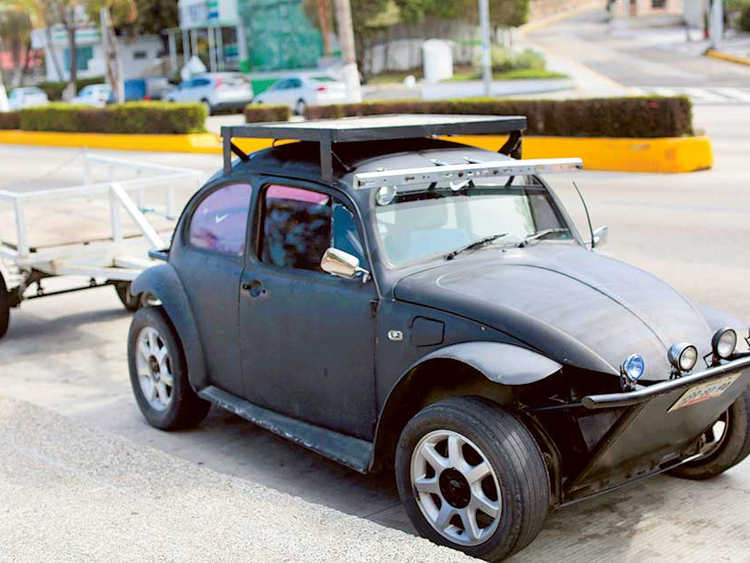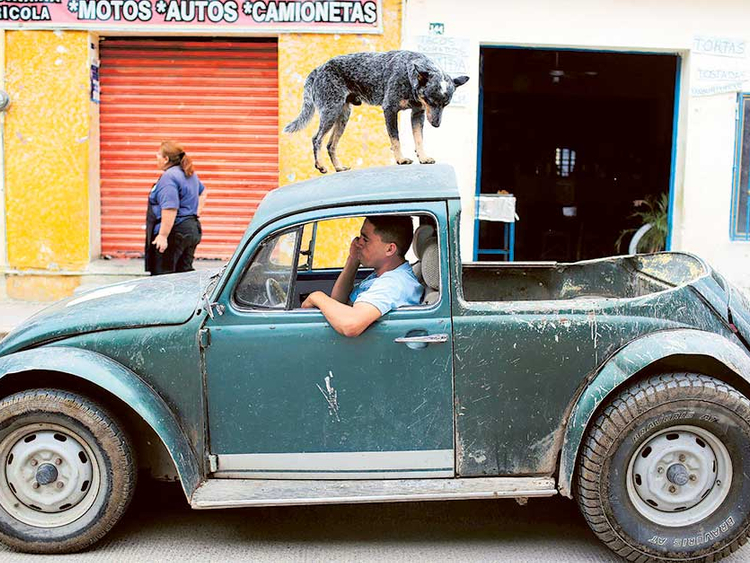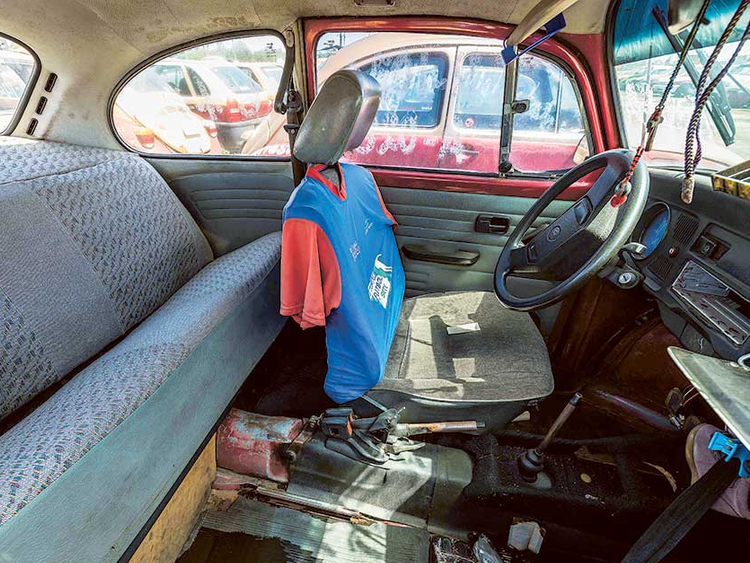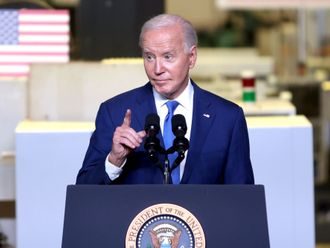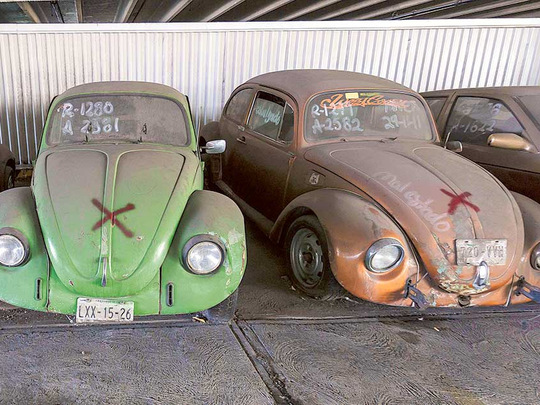
Mexico City: It was a symbol of the Mexico City landscape, zooming, honking and fuming in the mega-capital’s infamously dense traffic. But the beloved Volkswagen Beetle is nearly extinct, a victim of anti-pollution campaigns.
A few “vochos,” as the curvy car is known in Mexico, can still be spotted occasionally in the city’s chaotic streets while so-called “Vochomania” clubs of collectors try to keep it alive.
But the once ubiquitous white and green — and later red and gold — Beetle taxis that clogged boulevards are gone from the metropolis, home to 20 million people and four million cars.
“We could have thought about keeping a few in the historic centre to preserve the symbol. But it wasn’t meant to be,” said Rodrigo Diaz, an urban planning consultant who writes a blog on transport issues.
The unceremonious demise of the vocho is surprising for a country that has had a long love affair with the Beetle.
The “people’s car” born in Germany in the politically charged 1930s arrived in Mexico in 1954, where it became an instant hit.
Seen as affordable, easy to fix and a fun ride, Mexicans scooped up 50,000 Beetles in just one year. It was quickly adopted by taxi drivers and the Volkswagen was given the diminutive nickname, vocho.
“In case of a breakdown, you could replace the fan belt with pantyhose,” recalled Ricardo, a nostalgic taxi driver.
The car’s success prompted Volkswagen to build a plant in the central state of Puebla in 1964. By 1973, a third of cars sold in Mexico were vochos.
During that era, the Beetle became the most produced single model car in history with 15 million vehicles made, overtaking Ford’s Model T.
Beetle fever spread across the region. In Brazil, where it was also built, people called it “Fusca.”
In Uruguay, former president Jose Mujica declared only one asset in 2010: His 1987 Beetle.
While the bug was adored in Mexico, its charm won over Hollywood, where it was immortalised as “Herbie” in a Disney film series about the Number 53 race car with a big heart.
In 1980, the production took the Beetle to Mexico in “Herbie Goes Bananas,” in which the intelligent car faces off with a bull in an arena, dismantles a network of smugglers of Aztec artefacts and accelerates like a Formula 1 race car.
The films contributed to the Beetle’s worldwide popularity.
But after the era of the oil crisis, the Beetle began to lose its charm. It was suddenly seen as too polluting, too noisy and too uncomfortable.
Its back seat was too hard compared to newer vehicles. The passenger seat was often removed by taxi drivers. When the driver hit the brakes too hard, the passenger risked flying through the windshield.
Worse, in the late 1990s, criminals turned the Beetle into a trap for “express” kidnappings and robberies, transforming the “Love Bug” into a villainous vocho.
“The two-door system kept you blocked in the back of the vehicle,” said Sofia, a Mexico City resident who was the victim of one of these wild rides in 1994. “The driver would let his accomplices get in and they would take your money.”
The Beetle taxis were repainted in white and green in an attempt to refurbish their tarnished image. The colours were later changed to red and gold.
But the new body paint was not enough as passengers preferred newer, safer and more comfortable rides.
The last vocho was built in 2003 in Puebla, at the world’s last Beetle assembly plant.
Taxi drivers were offered $1,000 (Dh3,670) to get rid of them. In 2012, there were still 3,500 Beetle taxis, but they were gradually sent to junkyards.
The capital’s taxis are now four-door vehicles with a rear trunk, like in most major world cities.
Beetle aficionados can still find a few taxi-vochos but they have to venture into tourist towns such as Taxco, where they are painted red, or Acapulco, where they are white and blue.
“Unlike London with its double-decker buses, San Francisco and Lisbon with their cable cars, or Valparaiso with its funicular, Mexico didn’t declare this vehicle a part of its historic heritage,” Diaz, the blogger, lamented. “It’s a shame.”
At least one white and green taxi can still be seen: in a museum in Berlin. It was sent by Mexico City in 2008 as a gift, in a sort of return-to-sender gesture after a 50-year love affair.


